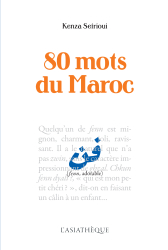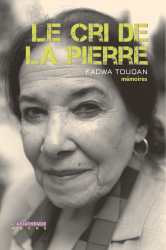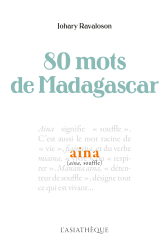Details
Format: Paperback
ISBN: 9782360570683
Collection: Langues INALCO
17 x 24 cm
Weight: 657 gr
Pages: 352
Edition :
2015
First publication: 08/02/2012
Last printing: 11-2022
Manuel d'indonésien, volume 1 (Livre + audio)
L'Indonésie au quotidien
With about 200 million speakers, Indonesian, the official language of the Indonesian Republic, is by far the main spoken language among the Austronesian languages. The Manuel d'indonésien (Indonesian Language Manual) is first dedicated to standard Indonesian, that is to say the language of newspapers, administration, teaching and professional relations, but it gives a significant place to everyday Indonesian, used for chats and informal relations. With this book, the learners will acquire most of what they need for exchanging in an Indonesian environment after a year of studies. It presents 24 lessons and 5 units Révisions et bilan (Revisions and assessment) which will allow the students to measure their progression. Each lesson includes: a dialogue; a list of vocabulary; a grammar course, many exercises and a rich written, audio and iconographic material (over 150 illustrations in full colour). Cultural complements are added to one lesson out of three. A bibliography and an Indonesian-French lexicon are given at the end of the volume. Two hours of audio recordings are going along the manual and can be downloaded for free here. A number of complements can be found here : translation of the dialogues, keys to exercises, transcription and translation of the records concerning oral understanding exercises. Conceived for the learner to reach level A2 (CECR). Jérôme Samuel is a senior lecturer at INALCO (National Institute for Oriental Languages and Civilisations, Paris). Saraswati Wardhany has been a teaching assistant at INALCO and taught French at the French Cultural Centre in Bandung.
CONTRIBUTORS' BIOGRAPHIES
Jérôme Samuel
Jérôme Samüel heads the Indonesian department at Inalco.
Saraswati Wardhany
Saraswati Wardhany has Indonesian as a mother tongue.
TABLE OF CONTENTS
Présentation
Leçon 1
1. Grammaire
1.1. Le système phonétique
1.2. Les structures syllabiques
1.3. L'alphabet
2. Compréhension et expression
3. Langue et culture
Leçon 2
1. Dialogue Linda tba di Jakarta
Linda arrive à Jakarta
2. Vocabulaire
3. Grammaire
– La phrase simple
– La négation
– L'intonation
4. Exercices
5. Compréhension et expression
6. Langue et culture : s'interpeller, se saluer
Leçon 3
1. Dialogue
2. Vocabulaire
3. Grammaire
4. Exercices
– Les démonstratifs
– Le groupe nominal de base
– L'interrogatif apa
5. Compréhension et expression
6. Langue et culture
Leçon 4
1. Dialogue
2. Vocabulaire
3. Grammaire
– Le groupe verbal
– Les auxiliaires verbaux
4. Exercices
5.1. Compréhension et expression orale
5.2. Compréhension et expression écrite 6.
Langue et culture
Leçon 5
1. Dialogue
2. Vocabulaire
3. Grammaire
– Le relatif yang
– Les interrogatifs apa et siapa
4. Exercices
5. Compréhension et expression
6. Langue et culture
Révisions et bilan I – leçon 1 à 5
Leçon 6
1. Dialogue
2. Vocabulaire
3. Grammaire
– Le sandhi
– La numération
4. Exercices
5. Compréhension et expression
6. Langue et culture
Leçon 7
1. Dialogue
2. Vocabulaire
3. Grammaire
– Les personnels
– Autres valeurs de -nya
4. Exercices
5. Compréhension et expression
6. Langue et culture
Leçon 8
1. Dialogue
2. Vocabulaire
3. Grammaire
– L'interrogatif berapa
– La phrase à thème
4. Exercices
5. Compréhension et expression
Leçon 9
1. Dialogue
2. Vocabulaire
3. Grammaire
– Le lieu
– Formes de "être" et "avoir"
4. Exercices
5. Compréhension et expression
6. Langue et culture
Leçon 10
1. Dialogue
2. Vocabulaire
3. Grammaire
– Le passif
4. Exercices
5. Compréhension et expression
Révision et bilan II – leçon 6 à 10
Leçon 11
1. Dialogue
2. Vocabulaire
3. Grammaire
– L'ordre
– La défense
–Les interrogatifs de la cause et de la manière
4. Exercices
5. Compréhension et expression
Leçon 12
1. Dialogue
2. Vocabulaire
3. Grammaire
– L'interrogatif mana
– Le préfixe verbal transitif meN-
4. Exercices
5. Compréhension et expression
Leçon 13
1. Dialogue
2. Vocabulaire
3. Grammaire
– L'expression du temps
– L'heure et la date
4. Exercices
5. Compréhension et expression
6. Langue et culture
Leçon 14
1. Dialogue
2. Vocabulaire
3. Grammaire
– L'affixe verbal meN-/-kan
4. Exercices
5. Compréhension et expression
Leçon 15
1. Dialogue
2. Vocabulaire
3. Grammaire
– Les axiliaires verbaux
– La mise en valeur de l'interrogation
4. Exercices
5. Compréhension et expression
Révisions et bilan III – leçons 11 à 15
Leçon 16
1. Dialogue
2. Vocabulaire
3. Grammaire
– L'affixe verbal meN-/-i
4. Exercices
5. Compréhension et expression
Leçon 17
1. Dialogue
2. Vocabulaire
3. Grammaire
– Le comparatif
– La préposition dengan
4. Exercices
5. Compréhension et expression
6. Langue et culture
Leçon 18
1. Dialogue
2. Vocabulaire
3. Grammaire
– Suffixes -kan et -i comparés
– Quelques constructions verbales
4. Exercices 5. Compréhension et expression
6. Langue et culture
Leçon 19
1. Dialogue
2. Vocabulaire
3. Grammaire
– Expression de la quantité et de l'intensité
– Le superlatif
4. Exercices
5. Compréhension et expression
Leçon 20
1. Dialogue
2. Vocabulaire
3. Grammaire
– Le préfixe verbal ter-
4. Exercices 5. Compréhension et expression
Révisions et bilan IV – leçons 16 à 20
Leçon 21
1. Dialogue
2. Vocabulaire
3. Grammaire
– La réduplication nominale
4. Exercices
5. Compréhension et expression
6. Langue et culture
Leçon 22
1. Dialogue
2. Vocabulaire
3. Grammaire
– Le préfixe verbal ber-
4. Exercices
5. Compréhension et expression
Leçon 23
1. Dialogue
2. Vocabulaire
3. Grammaire
– Le préfixe verbal meN- intransitif
4. Exercices
5. Compréhension et expression
Leçon 24
1. Dialogue
2. Vocabulaire
3. Grammaire
– Quelques prépositions untuk, pada et kepada
– L'expression de la manière
4. Exercices
5. Compréhension et expression
Révisions et bilan V - leçons 21 à 24














